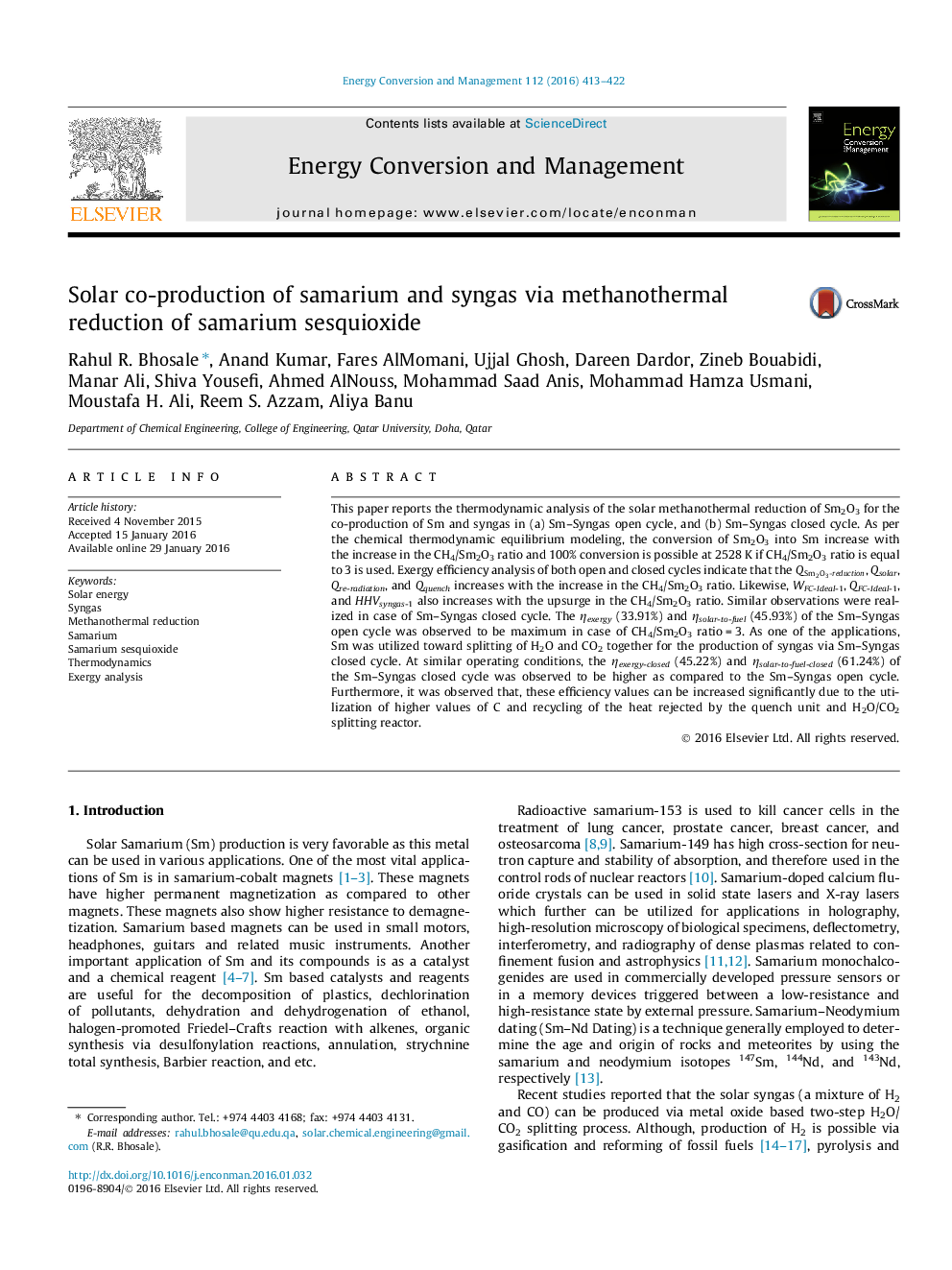| کد مقاله | کد نشریه | سال انتشار | مقاله انگلیسی | نسخه تمام متن |
|---|---|---|---|---|
| 763509 | 1462850 | 2016 | 10 صفحه PDF | دانلود رایگان |
• Thermodynamics of solar methanothermal reduction of Sm2O3 was investigated.
• Methanothermal reduction TH decreases with the increase in the CH4/Sm2O3 ratio.
• Sm and syngas production increases with the increase in the CH4/Sm2O3 ratio.
• Additional syngas was produced via thermochemical splitting of H2O/CO2 using Sm.
• ηexergy = 37.62% and ηexergy-closed = 56.92% was achieved by applying 50% HR.
This paper reports the thermodynamic analysis of the solar methanothermal reduction of Sm2O3 for the co-production of Sm and syngas in (a) Sm–Syngas open cycle, and (b) Sm–Syngas closed cycle. As per the chemical thermodynamic equilibrium modeling, the conversion of Sm2O3 into Sm increase with the increase in the CH4/Sm2O3 ratio and 100% conversion is possible at 2528 K if CH4/Sm2O3 ratio is equal to 3 is used. Exergy efficiency analysis of both open and closed cycles indicate that the QSm2O3-reductionQSm2O3-reduction, Qsolar, Qre-radiation, and Qquench increases with the increase in the CH4/Sm2O3 ratio. Likewise, WFC-Ideal-1, QFC-Ideal-1, and HHVsyngas-1 also increases with the upsurge in the CH4/Sm2O3 ratio. Similar observations were realized in case of Sm–Syngas closed cycle. The ηexergy (33.91%) and ηsolar-to-fuel (45.93%) of the Sm–Syngas open cycle was observed to be maximum in case of CH4/Sm2O3 ratio = 3. As one of the applications, Sm was utilized toward splitting of H2O and CO2 together for the production of syngas via Sm–Syngas closed cycle. At similar operating conditions, the ηexergy-closed (45.22%) and ηsolar-to-fuel-closed (61.24%) of the Sm–Syngas closed cycle was observed to be higher as compared to the Sm–Syngas open cycle. Furthermore, it was observed that, these efficiency values can be increased significantly due to the utilization of higher values of C and recycling of the heat rejected by the quench unit and H2O/CO2 splitting reactor.
Journal: Energy Conversion and Management - Volume 112, 15 March 2016, Pages 413–422
